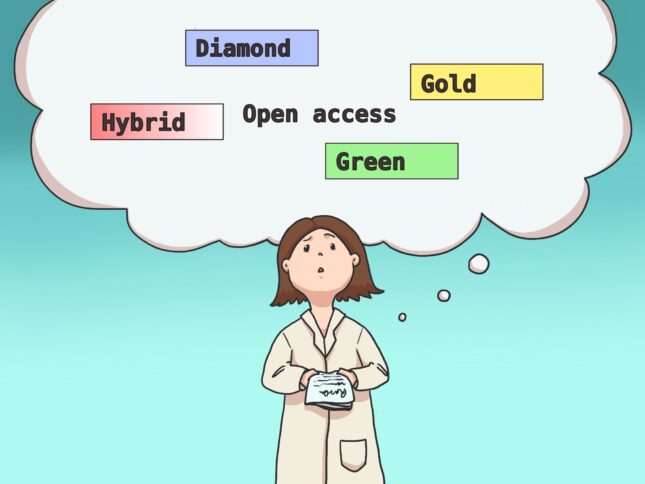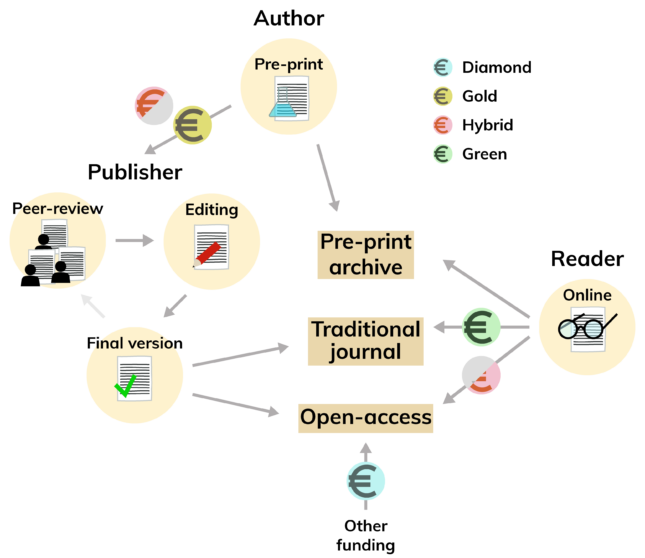Publishing: For science or for profit?
Publishing a scientific research is a much too complicated process, according to some. Editor Sanne van Beek investigates by talking to experts and those with experience in the matter.

It sounds like a dream for any student with ambitions in research: being able to publish your own paper. You get nothing in return, but you don't care. You have your first publication to your name, your first mark on the scientific world. After publishing, you're eager to share your paper with all your friends and family, but then it turns out they have to pay for it. Why is that? You wrote it, then you must own the rights to it, right? Nobody bought the rights from you, so why can't you access your own article?
Every year thousands of scientific papers are published from Leiden University alone. Around the world, there are millions of publications each year. Publications generally appear in scientific journals specific to the relevant field or discipline. Published articles are authored by scientists, peer-reviewed, and sent through proofreaders and editors. A journal depends on readers or grants to operate, which means that a journal must not only ensure the reliability of its publications, but also their marketability. Thus, an article must be scientifically sound and must also attract readers. This has many implications for scientists who are eager to publish their research. A study that is average, but contains more marketable results will be published faster than a good reproduction of previous research, because a study that has been done before is of less interest to readers.
Science versus profit
Even when your article is finally published, you're not there yet. When an article is published in a magazine, generally the author is paid for writing the article and the reviewer is paid for proofreading. This is funded by requiring readers to pay for access to the magazine. This sounds like a logical sequence, but for scientific articles this is different. First, the researcher gets paid nothing for his article by the publisher. The institute of the researcher may choose to pay them, but that also places an additional burden on the institute. The peer reviewer works on a voluntary basis and therefore does not receive anything from the publisher either. This system could mean that articles are completely open-access and therefore the reader can access them without paying. However, this is not always the case. For most journals the reader also pays to read an article.
This also explains why the profit margins of scientific journals are so high. Elsevier magazine is one of the largest publishers of scientific articles. As many as 560,000 articles were published by Elsevier in 2020, almost twenty percent of global scientific publications. That year, Elsevier's operating profit was almost 38%. This is a lot of profit for any company, but starts to make sense when you consider that Elsevier is paid by both the writer and the reader. Getting published by Elsevier is certainly not cheap either. The publication costs, or ‘Article Publishing Charges’ (APCs), vary between €150 and €9900 depending on the journal in which the article eventually gets published. The average APC is over €2800 to have an article peer-reviewed, edited and published.
Ways of publishing
There are several ways to get an article published, with varying costs and rights associated with them. These approaches are all meant to publish an article in ‘open-access’ to some extent. Open-access means that an article should be as accessible as possible without having to pay for it. The Leiden University website distinguishes four options for publishing an article:
- “Diamond Open Access: You publish in a fully Open Access journal or platform that does not charge publication fees (APCs).
- Gold Open Access: You publish in a fully Open Access journal. The publication is freely accessible. For these journals, publication fees (APCs) are charged to the author. Many funders of research allow these APCs to be included in the grant budget.
- Hybrid Open Access: You publish in a traditional subscription-based journal. These articles can become Open Access if a publication fee is paid to the publisher by the author.
- Green Open Access: You publish in a traditional subscription-based journal. You may then have a version of the paper archived in the university repository (via LUCRIS). Sometimes publishers will stipulate an embargo period, during which the article can only be read in the journal.”

With all of these options, it is immediately apparent that for the researcher there is no advantage to publishing. The first option, Diamond Open Access, does not require you to pay, but it is the hardest option to pursue. If your research isn't groundbreaking enough and doesn't generate good headlines in the eyes of the publisher, you won't get accepted. Gold Open Access is a little easier, but costs a lot of money. This can be included in the grant budget and thus paid for by the university, but it must be deemed important enough by the university. This is especially difficult as a student. Hybrid Open Access ensures that the article can be read by anyone, but this again does cost money. APCs must be paid for by the university or by the author. Green Open Access does not cost anyone money, but it does cost you as the author the rights to your article. You can only read your article back through the university, sometimes months after publication, because the publisher wants as many people as possible to pay to read your article first. Fortunately, you can keep the rights to your so-called pre-print, the version before peer review and formatting by the publisher. Unfortunately, you lose the rest to the publisher.
Scientists around the world are increasingly expressing dissatisfaction with the profit-driven practices of publishers. Many are going so far as to boycott publishers like Elsevier and publish the pre-prints of their work on true open-access platforms, such as arxiv.org. The downside to these platforms is that they only contain pre-prints. An article about a study could contain inaccuracies or falsehoods since no peer reviews have taken place. So this solution is not perfect, but it is already getting closer to what many scientists want: science that is accessible to everyone.
Sources:
- Publications in Elsevier: Elsevier. (2021). Elsevier Corporate Brochure 2021
- Elsevier Pricing: Article Publishing Charges & Subscription Prices Elsevier. (n.d.) Elsevier. Retrieved April 21, 2021, from https://www.elsevier.com/about/policies/pricing
- Winst Elsevier: RELX. (2021). RELX Annual Report 2020. RELX Annual Report 2020
- Open-access publishing: How can you publish Open Access? - Leiden University. (2021). How can you publish Open Access?





0 Comments
Add a comment